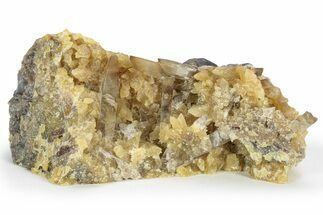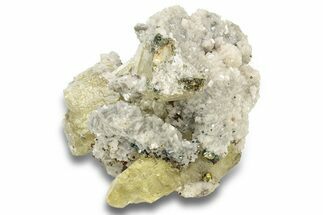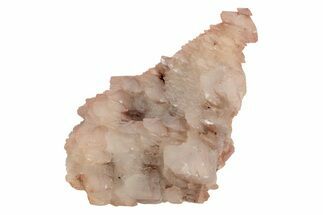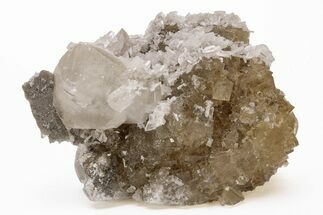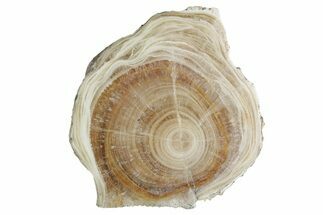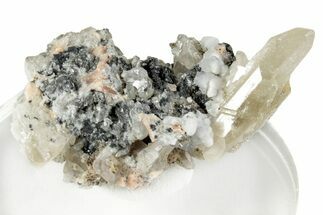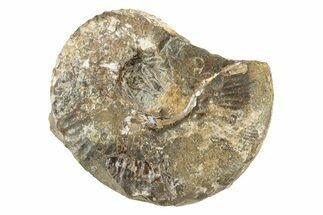This Specimen has been sold.
2.7" Yellow Calcite Crystal Cluster with Barite - South Dakota
This is a cluster of yellow calcite crystals that was collected from Meade County, South Dakota. There is a lustrous yellow-brown barite crystal that formed in association with the calcite. Under long wave and short wave UV, these crystals react by fluorescing orange-yellow (long wave UV) and white-yellow (short wave UV).
Elk Creek, South Dakota is renowned for producing these calcite and barite specimens. The barite crystals collected from here are considered some of the nicest specimens around the world and can sell for thousands of dollars. These mineral specimens form as fossiliferous septarian, calcareous concretions that erode out of the Gregory Member of the Pierre Shale. These concretions have to be carefully opened with specialized diamond saws. If opened incorrectly or too hastily, the calcite and world-class barite crystals can be damaged easily.
Calcite, CaCO3, is a carbonate mineral and the most stable polymorph of calcium carbonate. The other polymorphs are the minerals aragonite and vaterite. Calcite crystals are trigonal-rhombohedral, though actual calcite rhombohedra are rare as natural crystals. However, they show a remarkable variety of habits including acute to obtuse rhombohedra, tabular forms, and prisms. Calcite exhibits several twinning types adding to the variety of observed forms. It may occur as fibrous, granular, lamellar, or compact. Cleavage is usually in three directions parallel to the rhombohedron form.
Barite, commonly spelled baryte, is well-known for its great range of colors and varied crystal forms and habits. = It is a heavy mineral consisting of barium sulfate, and typically has the chemical formula of BaSO4. The barite group consists of baryte, celestine, anglesite, and anhydrite. It is generally white to colorless and is the main source of barium.
SPECIES
Calcite & Barite
LOCATION
Elk Creek, Meade County, South Dakota
SIZE
2.7 x 2"
CATEGORY
ITEM
#170678
 Reviews
Reviews
